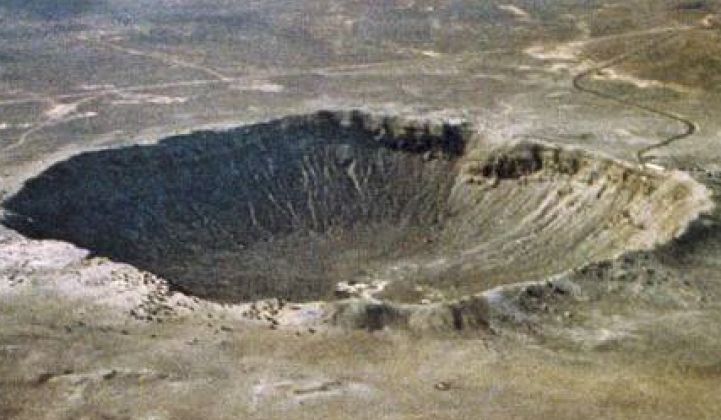NovaSolar, a Chinese-Californian restart of the failed amorphous silicon (a-Si) firm OptiSolar, looks to be in a death spiral -- with reports of unpaid workers, mass layoffs, and abandoned plans of factories in China and Sacramento. The company has not responded to requests for comment.
Lindsay Riddell of the San Francisco Business Journal reports that "NovaSolar appears on the brink of becoming the latest failure in an area of Fremont quickly turning into a solar death row." Riddell has discovered that the firm has furloughed 52 of its 60 employees. She also learned from COO Darien Spencer that the remaining employees have not been paid in months.
We've heard rumors of unpaid employees for months, as well.
OptiSolar was born out of a research paper written at Hewlett-Packard in the early 2000s and aspired to become a gigantic, vertically integrated solar powerhouse. It wanted to build "solar city" complexes with factories that could churn out two to three gigawatts of amorphous silicon solar panels each year. Rather than go with traditional frames, the paper suggested utilizing aluminum frames from regular windows and backing the panels with inexpensive silicon or plastic.
Modules would cost $0.60 to $0.52 per watt to make, less than prices today and close to the goal set by the DOE's SunShot program for modules in 2017. Fully installed, solar power would cost $1.00 to $0.88 per watt, the paper said.
Factories could be conveniently located to power plants, which OptiSolar would own and manage.
Canadian resource and oil investors put more than $322 million into the effort. By 2007, it had small production facilities in the Bay Area, but the big news was still to come. In 2007, the company won contracts to install over 200 megawatts in Ontario and build a 550-megawatt solar farm near San Luis Obispo for PG&E over several competitive bidders. Toward the end of 2008, California governor Arnold Schwarzenegger showed up for a factory opening that 60 Minutes covered.
The company granted few interviews. Few in the solar industry knew them, and the fact that that PG&E selected an untested startup that hadn't even completed its commercial-scale module factory had many scratching their head.
"Their greatest asset is their land use attorney," one executive told Greentech Media.
The end came quickly. Although the company had raised over $322 million, it was still trying to raise $200 million more at the end of 2008 during the credit crunch. Mass layoffs began in January. By April, First Solar bought both utility projects for $400 million and swapped out OptiSolar's proposed amorphous panels for its cadmium telluride ones. Months later, after several companies checked out the equipment, a Canadian company called Allora Minerals said it would buy the equipment and other assets and change its name to EPOD Solar.
EPOD Solar became NovaSolar, and Marvin Keshner, who wrote the HP paper, was the Chief Scientist, while Darien Spencer reprised his role as COO of the new company. Erik Vaaler, an OptiSolar founder, returned as head of engineering.
Thin-film silicon, with its low efficiencies, has always been a challenging material to make work. That's even more true in an era of cheap crystalline silicon.



